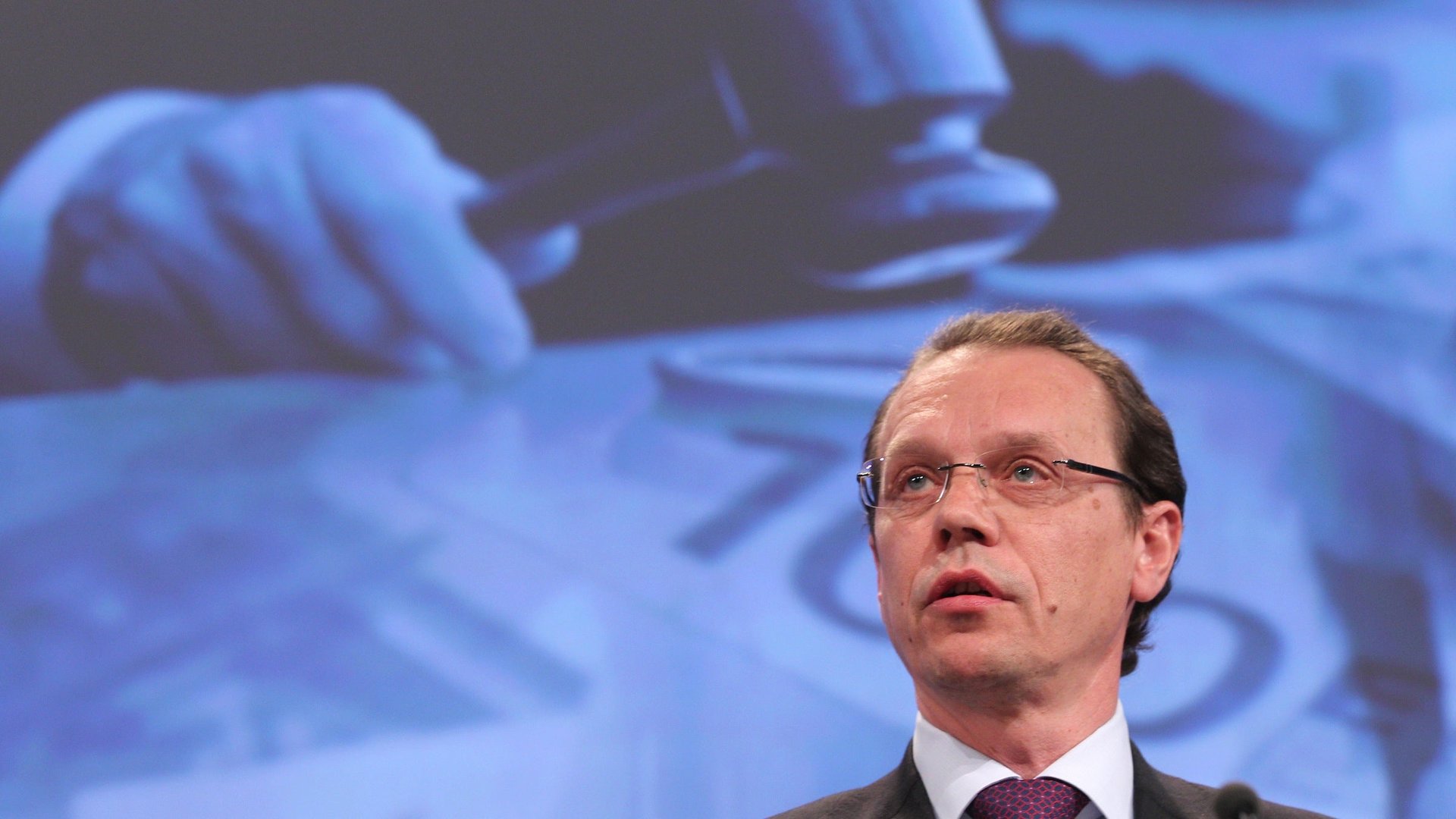Why 27 countries can’t agree on how to stop themselves all losing billions a year to VAT fraud
The crackdown was codenamed: Operation Inertia.


The crackdown was codenamed: Operation Inertia.
Yet despite the suggested futility of the name, it yielded surprising results. Fifteen people from Britain to Belgium were found guilty this summer of an elaborate tax scheme involving selling millions of mobile phones, most of which didn’t exist, through more than 50 real and phantom companies, including phone suppliers and freight haulers, in an attempt to illegally scam UK tax authorities out of £176 million ($284 million) in value-added tax (VAT) payments. It was one of the largest examples of “carousel fraud” uncovered in the UK to date, according to HM Revenue & Customs criminal investigations director, Donald Toon, who said:
The people who run these scams aren’t isolated individuals. Some of them are professional major fraudsters and it’s a massively international game.
Over the coming two days, government officials, business leaders, academics, and others will meet in Paris at an OECD global forum to discuss VAT issues, including how to reduce fraud. Cases involving VAT fraud in Europe are growing increasingly sophisticated and costly to taxpayers, while measures to stop them have been slow in coming and piecemeal at best.
What VAT-related fraud costs European taxpayers is anyone’s guess. A figure commonly cited is €100 billion ($128 billion) a year, even though that is a 2004 figure from the European Federation of Accountants. Numbers from the European Commission (EC) in 2009 suggest that revenue lost by OECD countries from VAT fraud (and VAT avoidance) runs at 10% or more of potential VAT revenues (pdf, p. 3). More recently, a member of the European parliament quoted €80 billion-€100 billion as a “conservative” estimate for a common type of VAT scam called “carousel fraud”, while saying that fiscal fraud overall might cost the EU up to €250 billion.
Round and round the carousel
In “carousel fraud”, two or more companies collude. The first one prepares fictitious invoices documenting that VAT has been paid to it for goods or services. It gives them to a second company, which recovers the VAT from the government as if it had paid the invoices. The first company meanwhile disappears, never having never having paid the VAT that it documented.
Carousel fraud often involves goods sold across borders such as mobile phones and microchips. Over time criminals have moved into software, licensing, and also emissions trading, as well as gas and electricity markets. Such scams have been linked to drug smuggling operations and even terrorism (pdf, p. 14).
Various EU countries have reported that despite some initiatives, this type of fraud is on the rise. At the end of October, Germany’s Federal Criminal Police Office released numbers showing financial fraud at record levels and showing annual losses of €50 billion from illegal activities including VAT-related trading scams.
Part of the problem lies with VAT itself, and a decision in 1992 to keep nationally-based systems within the new single European market. That left 27 different rates, exemptions and different administrations, making fertile ground for fraudsters.
Some national efforts to clamp down on this type of fraud have met with success. For instance, when trading in carbon credits shot up due to a widespread carousel fraud, France exempted the domestic trade from VAT, while the UK, Germany, Denmark, Spain and Luxembourg either lowered the VAT rate to zero or implemented a “reverse charge” mechanism whereby the recipient of goods, rather than the supplier, is liable for VAT. Trading in emissions went back down as a result.
A need for harmony
However, dealing with the problem at a national rather than an EU level adds more complexity for legitimate business people, and can open up new ways for criminals to exploit the system. But attempts to harmonize VAT rules across the EU and make the tax more transparent have been slow and piecemeal. In 2006, the EC put out a formal call to discuss a co-ordinated approach against fiscal fraud. Two years later, a strategy with legislative plans followed, which included introducing a network of national officials to detect and combat new cases of VAT fraud. By the end of 2011, the EC unveiled its “priority actions” to create “a simpler, more efficient and more robust VAT system in the EU tailored to the single market.”
Obstructing reform are the usual local politics, the need to get all 27 countries to agree, and the fact that leaders fear losing precious VAT revenues if reforms go through. In 2009, the last year for which good numbers are available, VAT accounted for €784 billion and 21% of national tax revenue in the EU. As a result, countries have been willing only to “consider gradual changes for which the risks, benefits and costs are clear, well understood and fully assessed,” according to a report on the future of VAT by the EC.
But with economies in shambles and leaders desperate for tax revenue, the pace of reform is speeding up. In July, EU tax commissioner Algirdas Semeta adopted a proposal for a “quick reaction mechanism,” which allows member states facing massive VAT fraud to quickly implement an emergency “reverse charge mechanism” like the one already in use in some EU countries. Without this mechanism member states have to request a derogation to enact measures not provided for under EU VAT legislation, and this takes time. He said:
Fraudsters have become quicker and cleverer in developing schemes to rob the public purse. We must strive to be one step ahead of them.
Efforts to stay a step ahead, though, have so far resembled the dance between anti-doping officials and professional athletes. The best athletes have moved on to a new drug by the time officials know what they’re taking. In the case of Operation Inertia, the criminals had already successfully pocketed £107 million through VAT repayment claims before being caught. Officials are still trying to find the money.